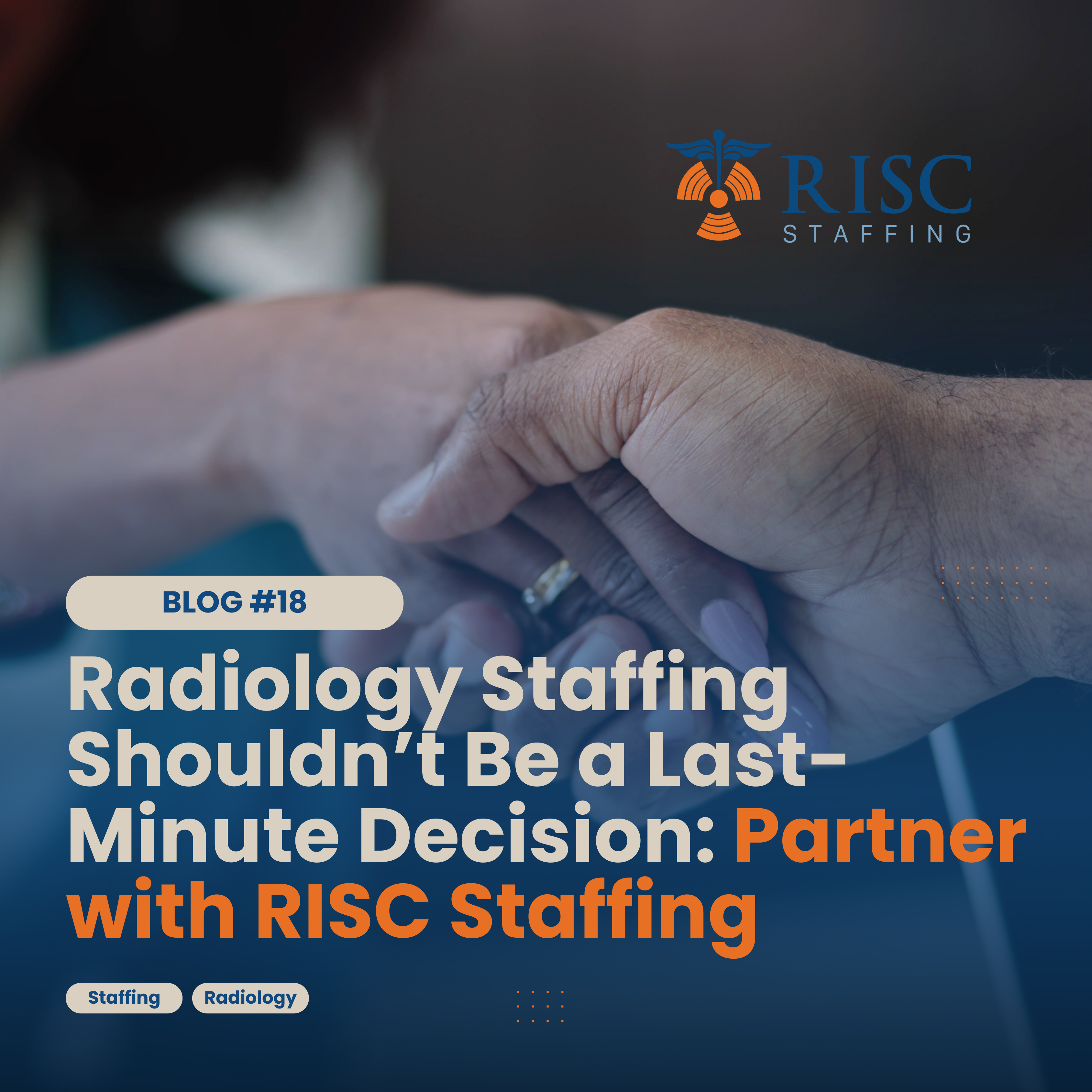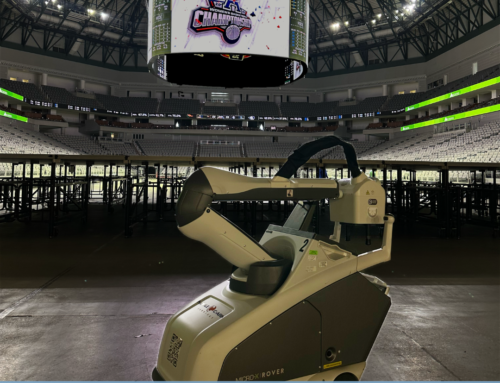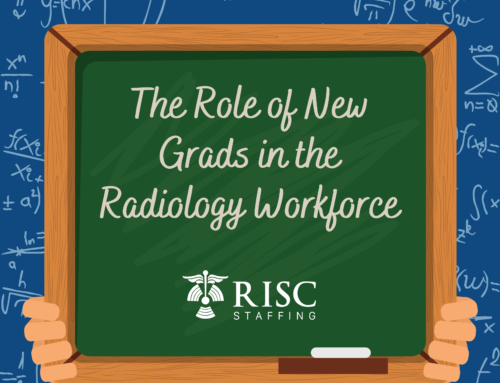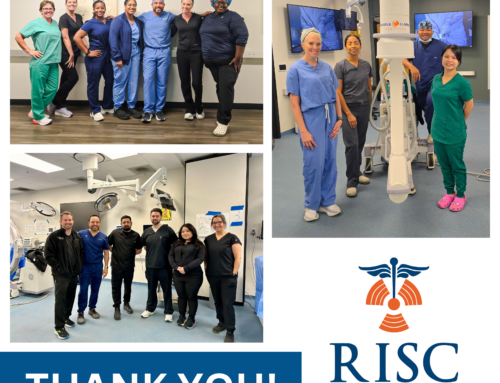Radiology Staffing Shouldn’t Be a Last-Minute Decision: Partner with RISC Staffing
Radiology plays a vital role in healthcare, and radiologic technologists (RTs) are the backbone of departments everywhere. They provide essential services, from routine X-rays to complex MRI scans, that help diagnose everything from fractures to life-threatening illnesses. Yet, staffing shortages in radiology departments can severely disrupt this process, leaving facilities scrambling to fill gaps in coverage.
Many healthcare organizations make the mistake of addressing staffing problems reactively, only hiring additional help after the problem has escalated. But in radiology, where every second counts, waiting until you’re understaffed can have far-reaching consequences. Proactive staffing—planning for future needs and working with an experienced partner like RISC Staffing—can prevent these crises, ensuring your facility runs smoothly and provides the highest level of care, even during the busiest times.
At RISC Staffing, we specialize in providing comprehensive staffing solutions for radiology departments across Texas. Our deep understanding of the industry allows us to anticipate your needs before they become a problem, offering flexible solutions that ensure both your team and patients are well taken care of. Whether you’re a busy hospital looking to fill PRN shifts or a clinic in need of long-term staff, we have a network of top-tier radiology professionals ready to step in when you need them.
The High Stakes of Radiology: Why Every Second Counts
Radiology is a fast-paced and high-stakes field, with medical imaging playing a crucial role in diagnosing and managing a wide variety of conditions. Imaging studies can reveal critical details that influence treatment decisions, from detecting tumors to assessing the severity of an injury. Because of this, any delays in imaging due to understaffed departments can have serious consequences for patient outcomes.
Consider the case of an emergency room patient with stroke symptoms. Time is of the essence, as every minute that passes increases the risk of long-term brain damage. A delay in obtaining the necessary imaging to confirm a stroke diagnosis could significantly impact the patient’s treatment and recovery. This is just one example of why radiology staffing needs to be seamless. Having enough qualified technologists on hand is essential to maintaining quick turnaround times and providing quality care.
Yet, radiology departments across the country are facing staffing shortages that compromise their ability to provide timely care. According to a study published by the American Society of Radiologic Technologists (ASRT), hospitals reported an average vacancy rate of 9.4% for radiologic technologists, with some regions experiencing even higher shortages. These staffing gaps mean longer wait times for patients, increased workloads for existing staff, and a higher risk of burnout.
Proactive vs. Reactive Staffing: Why It Matters
In healthcare, having the right people in the right places at the right time isn’t just a luxury—it’s a necessity. When it comes to radiology staffing, facilities are often faced with a crucial decision: Should they address staffing shortages only when they arise, or should they plan ahead to avoid potential crises altogether?
Reactive staffing—where a department only seeks out staff when they face an immediate shortage—creates a cycle of burnout, stress, and inefficiency. Not only are current staff members forced to pick up the slack, but patient care also suffers, leading to longer wait times, miscommunication, and overall lower satisfaction rates. According to the National Institute for Occupational Safety and Health (NIOSH), healthcare workers, including radiologic technologists, often experience high levels of occupational stress due to these kinds of staffing shortages.
Facilities often fall into the trap of reactive staffing when they don’t anticipate needs or lack a trusted staffing partner. This “band-aid” approach forces them to rush through hiring decisions or settle for subpar candidates, resulting in a revolving door of temp hires and overworked permanent staff.
On the other hand, proactive staffing allows healthcare facilities to plan for predictable staffing needs and to have a pool of qualified technologists ready to fill gaps as they arise. Instead of reacting to a crisis, you’re preparing for it, with a strategy that ensures minimal disruption to patient care and staff well-being.
Working with a staffing partner like RISC Staffing can be key in adopting a proactive approach. We help radiology departments map out staffing needs in advance, whether they’re preparing for the busy season or planning around staff vacations, leaves of absence, or anticipated retirements.
When you plan ahead:
- You reduce stress on your permanent staff: Radiologic technologists are less likely to experience burnout when they aren’t constantly picking up extra shifts.
- Patient care improves: With enough staff on hand, patients receive timely care, and the risk of errors or delays decreases.
- You maintain department efficiency: Workflow remains smooth, and you avoid the bottlenecks that often occur when understaffed.
The Challenges Radiology Departments Face
Radiology departments face a unique set of challenges when it comes to staffing. Unlike some other healthcare roles, radiologic technologists require highly specialized training and certifications to operate advanced imaging equipment, perform diagnostic studies, and ensure patient safety during procedures. As the demand for imaging grows, particularly in an aging population, so too does the need for skilled RTs.
Several factors contribute to the difficulty of maintaining adequate radiology staffing:
- Seasonal Trends Certain times of the year—like the fall and winter months—can see a significant spike in radiology demand. With flu season comes an increase in chest X-rays, and many patients with end-of-year insurance benefits look to schedule elective procedures before the new year. Facilities also see a rise in the need for diagnostic imaging during this period as hospitals treat more patients with respiratory conditions, injuries, and other complications. Without adequate staffing, radiology departments may find themselves overwhelmed by the sheer volume of cases.
- Unpredictable Absences Staff members may be out on leave due to illness, injury, or personal reasons. While some absences can be anticipated (such as maternity leave or scheduled vacations), others arise unexpectedly, leaving the department short-handed. Facilities that don’t plan for such contingencies often struggle to maintain patient care levels, leading to stress and frustration among the remaining staff.
- Aging Workforce A 2019 report from the U.S. Census Bureau noted that 16.5% of the American population is aged 65 or older, and this number is expected to grow. With an aging population comes an increase in medical imaging, as older adults are more likely to require diagnostic studies for chronic conditions such as heart disease, cancer, and osteoporosis. Meanwhile, the radiologic workforce itself is aging. Many radiologic technologists are approaching retirement age, creating a staffing gap that needs to be filled by younger generations of RTs.
- The Lingering Impact of COVID-19 The COVID-19 pandemic continues to place significant strain on the healthcare system, including radiology departments. Many radiologic technologists left the field during the pandemic due to burnout or health concerns, while others were redeployed to different areas of the hospital to handle the surge in COVID patients. The industry is still dealing with the effects of this, as hospitals and imaging centers work to rebuild their staffing levels.
- Increased Complexity of Procedures As medical technology advances, the complexity of diagnostic imaging procedures continues to increase. Radiologic technologists today must be proficient in operating highly sophisticated equipment such as MRIs, CT scanners, and interventional radiology machines. These procedures not only require advanced training but also demand more time per patient, further stretching the limits of an already strained workforce.
Given these challenges, radiology departments need a staffing partner who can provide flexibility and expertise. RISC Staffing specializes in helping departments navigate these issues by offering access to a pool of qualified technologists who are ready to step in when needed.
The RISC Staffing Difference: What We Bring to the Table
At RISC Staffing, we recognize that every radiology department is unique. Some may need additional technologists to cover a particularly busy season, while others may require long-term staff to fill permanent roles. Whatever the need, our goal is to provide customized solutions that help facilities maintain optimal staffing levels without compromising quality of care.
Here’s what sets us apart:
- Access to Top-Tier Talent We pride ourselves on maintaining a vast network of radiology professionals, ranging from fresh graduates eager to gain experience to seasoned technologists with years of expertise in specialized modalities like MRI or CT. By continuously recruiting and vetting candidates, we ensure that our clients have access to the best talent available, no matter the staffing needs.
- Flexible Staffing Solutions One of the key benefits of working with RISC Staffing is the flexibility we offer. We provide PRN (as-needed) staffing, part-time coverage, and full-time hires, giving facilities the ability to adjust staffing levels based on patient volume, budget, and other factors. Our scheduling services, supported by our use of modern technology like TeamBridge, make it easy for facilities to seamlessly integrate new staff into their schedules.
- Tech and Facility Support Unlike some staffing agencies that focus solely on the needs of the facility, we make it a priority to balance the needs of both technologists and healthcare organizations. By offering competitive compensation, opportunities for career growth, and a supportive work environment, we attract top-tier techs who are enthusiastic about joining our clients’ teams. This results in a better experience for both the staff and the facilities they serve.
- Comprehensive Onboarding and Credentialing We take the hassle out of the hiring process by handling all aspects of onboarding, credentialing, and compliance. This ensures that every technologist we place is fully prepared and meets all necessary certifications and regulatory requirements, giving facilities peace of mind that their staff is qualified and ready to work from day one.
Real-World Impact: How Staffing Affects Patient Care and Satisfaction
When a radiology department is fully staffed, the difference is evident not only in the efficiency of the workflow but also in the quality of care provided to patients. With enough technologists on hand, imaging studies are completed on time, patient wait times are reduced, and staff members have the bandwidth to provide compassionate care.
Conversely, when a department is short-staffed, the negative impact is felt at every level:
- Longer wait times: Patients may have to wait days or even weeks for imaging appointments, delaying diagnosis and treatment.
- Overworked staff: Existing technologists are forced to pick up extra shifts or work overtime, leading to burnout, mistakes, and higher turnover rates.
- Decreased patient satisfaction: Patients expect timely care, and when facilities can’t deliver, satisfaction scores suffer. This not only affects the patient experience but can also damage a facility’s reputation.
The Role of Technology in Staffing Solutions
Modern technology has transformed the way healthcare facilities manage their staff, and radiology is no exception. At RISC Staffing, we leverage advanced scheduling tools like TeamBridge to ensure that our clients can manage their staffing needs with ease.
By using automated scheduling systems, we can match technologists with available shifts in real time, ensuring that facilities are never left scrambling for coverage at the last minute. This level of flexibility and responsiveness makes it easier to maintain consistent staffing levels, even during the busiest times of the year.
The Benefits of Working with RISC Staffing
Choosing a staffing partner is a significant decision for any healthcare facility, especially in a high-demand, high-impact field like radiology. Partnering with RISC Staffing comes with several key benefits that go beyond simply filling a position:
- Customized Solutions for Every Facility Whether you’re a large hospital system dealing with fluctuating patient loads or a smaller outpatient clinic looking to maintain steady staffing, we tailor our services to meet your unique needs. We take into account the specific challenges of your facility—such as patient volume, location, and modality requirements—and craft a staffing plan that works for you.
- Access to a Broad Network of Technologists The radiology field is highly specialized, with technologists trained in a variety of modalities including MRI, CT, ultrasound, and more. We provide facilities with access to technologists experienced in a wide range of imaging techniques, ensuring you get exactly the right person for the job. This is particularly important when dealing with sophisticated equipment that requires specific expertise to operate efficiently and safely.
- Improved Patient Care Fully staffed radiology departments provide better, more timely care, reducing delays in diagnosis and treatment. In a medical environment where every minute matters, our goal is to help you maintain the staffing levels you need to ensure quality care without compromising efficiency. Studies have shown that well-staffed healthcare teams lead to better patient outcomes, higher satisfaction rates, and fewer medical errors.
- Support for Radiologic Technologists At RISC Staffing, we recognize that our radiologic technologists are the backbone of the service we provide. That’s why we work hard to offer competitive compensation packages, flexible scheduling options, and opportunities for professional growth. By supporting our techs, we not only attract the best talent, but we also ensure that they are enthusiastic and motivated to do their best work. This leads to a win-win scenario for both the facility and the technologist, resulting in higher job satisfaction and retention.
- Seamless Integration into Your Team Bringing in new staff can sometimes disrupt a department’s workflow, but we strive to make the transition as smooth as possible. Our techs are not only highly qualified but also adaptable and ready to integrate seamlessly into your existing team. This allows for continuity in patient care and minimizes any potential disruptions to your department’s day-to-day operations.
- Ongoing Support and Communication Our relationship with clients doesn’t end once a technologist is placed. We maintain ongoing communication to ensure that everything is running smoothly and address any challenges that arise. If you have additional staffing needs or feedback on how we can improve, we’re here to listen and act quickly.
Addressing the Human Element: The Importance of Work-Life Balance for Techs
The healthcare field is notorious for long hours and demanding schedules, and radiologic technologists are no exception. As with all healthcare professionals, technologists face the risk of burnout, especially in departments that are chronically understaffed. According to a 2021 survey by the Radiologic Society of North America (RSNA), nearly 50% of radiologic technologists reported feeling some degree of burnout.
Burnout doesn’t just impact the individual tech—it also affects the entire department. Stressed and overworked technologists are more likely to make errors, take time off, or even leave the profession altogether. This puts additional pressure on the remaining staff, perpetuating a cycle of fatigue and inefficiency.
At RISC Staffing, we believe that maintaining a healthy work-life balance is critical for both the technologists we place and the healthcare facilities we serve. By offering flexible scheduling options, we allow technologists to choose shifts that work for their lifestyle, which in turn leads to a more energized and focused workforce.
We also recognize that work-life balance is essential to job satisfaction. Technologists who feel supported and valued are more likely to stay in their roles, reducing turnover and creating a more stable, consistent environment for patient care. Facilities benefit from this stability as well, as they can rely on a dedicated team of professionals who are invested in their work.
Looking Forward: The Future of Radiology Staffing
The healthcare landscape is evolving rapidly, and radiology departments need to adapt to stay ahead of the curve. As medical technology continues to advance and patient demand for imaging services grows, staffing challenges will only become more complex. That’s why facilities that invest in long-term staffing partnerships are better positioned for success.
Continuous Education and Certification Radiologic technologists are required to stay up-to-date on the latest advancements in imaging technology and safety protocols. This means ongoing education and certification will continue to be a key part of maintaining a well-trained workforce. Facilities that prioritize continuous education and work with staffing partners who ensure their techs are fully certified will be better equipped to handle the increasing complexity of diagnostic imaging.
The Growing Importance of Flexibility The future of radiology staffing lies in flexibility. With the rise of telemedicine and mobile imaging services, radiology technologists will need to be more adaptable than ever before. Facilities that embrace this shift—by offering flexible work options, supporting new modalities, and working with staffing partners who can quickly adjust to changing needs—will have a significant advantage.
Technological Advances in Staffing The use of artificial intelligence (AI) and automated scheduling tools will continue to revolutionize healthcare staffing. With the ability to predict staffing shortages and optimize schedules, technology will play an increasingly important role in ensuring radiology departments are fully staffed at all times. By adopting these tools early on, facilities can stay ahead of the competition and provide a higher level of patient care.
Don’t Wait for a Crisis—Plan Ahead with RISC Staffing
When it comes to radiology staffing, waiting for a crisis to act can have devastating consequences for both patient care and department efficiency. But by planning ahead and partnering with a trusted staffing provider like RISC Staffing, you can avoid the stress of last-minute staffing decisions and ensure that your department runs smoothly year-round.
From providing flexible staffing solutions to supporting radiologic technologists in their careers, RISC Staffing is committed to helping radiology departments succeed. Don’t wait until your department is understaffed and overwhelmed—reach out to RISC Staffing today and let us help you build a proactive staffing plan that keeps your team fully supported and your patients well cared for.






